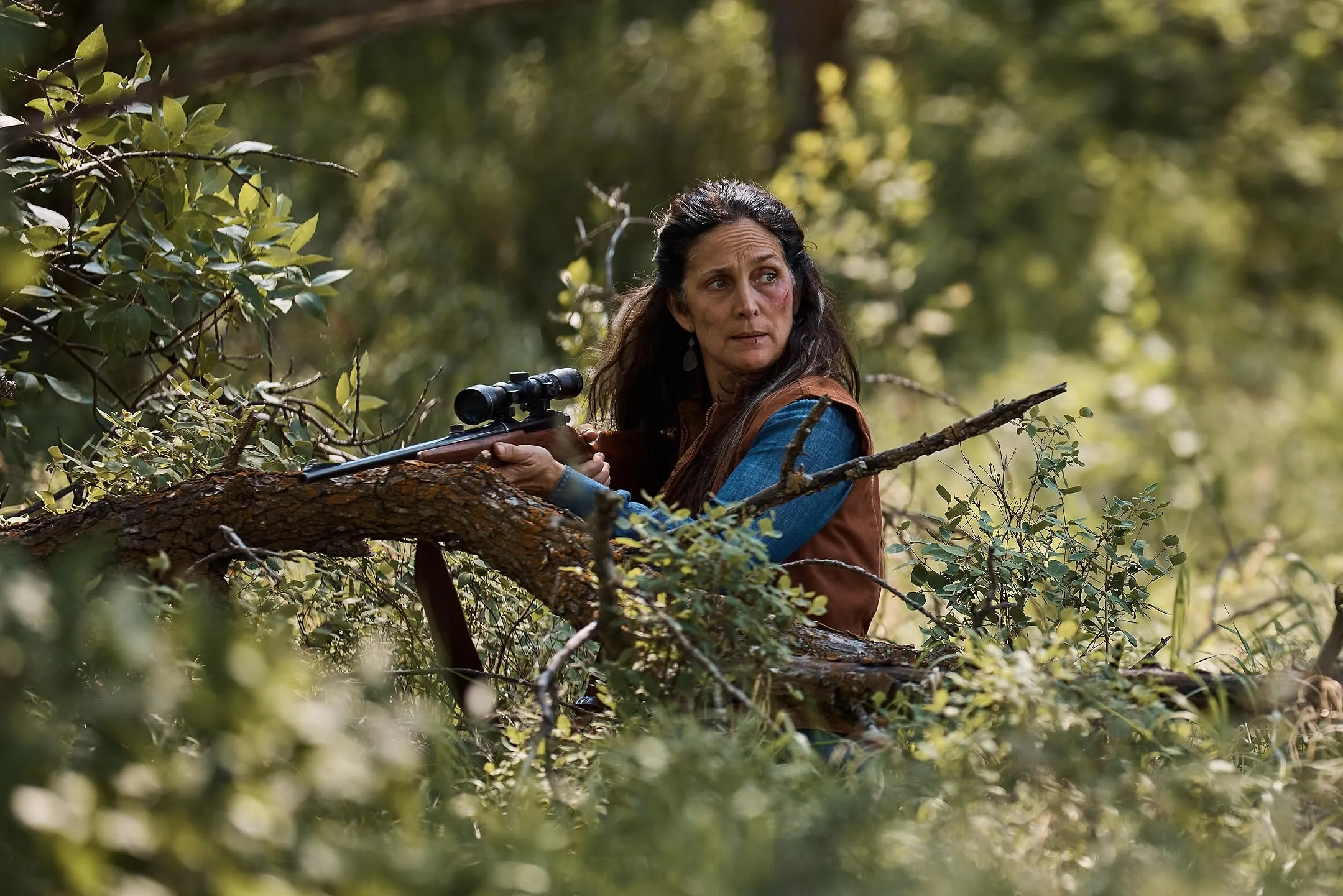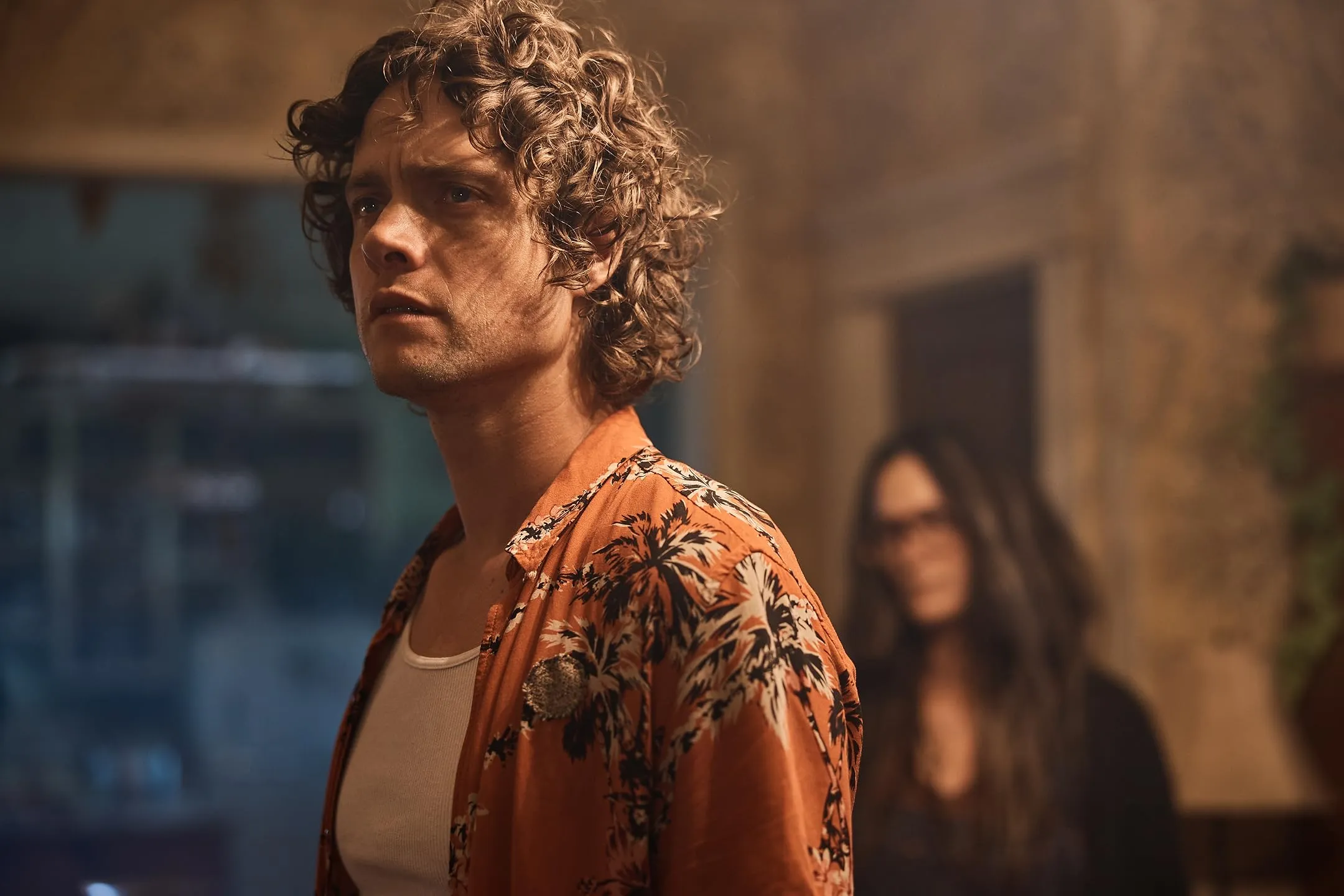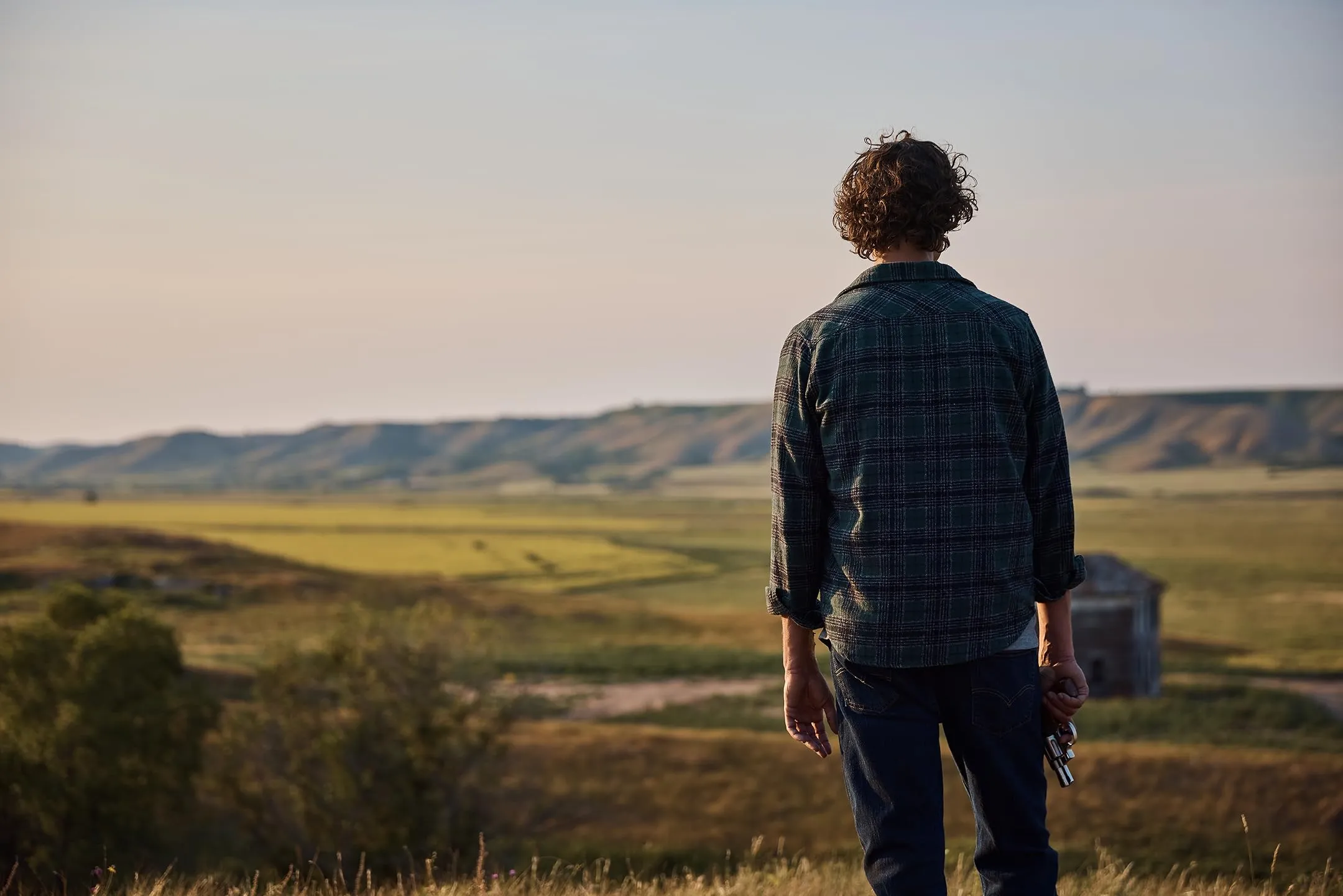Ethan finds himself in a nightmare with no exit. As he wakes each day, the world has changed, but he cannot remember how. A devastating virus has reduced civilization to ashes, and strange new beasts now rule what remains. Only scattered survivors like Ethan try to cling to their fragile hold on life. But for him, even the trauma of the present slips from his grasp.
All he knows is the drive to find the woman he loves. Before the outbreak, Ethan and his girlfriend Emma hoped to outrun the sickness, but now she is missing in the wasteland that was once their home. With no idea how or why, each dawn delivers Ethan back to square one, knowing only that he must find Emma, though the details slip away like the morning mist.
It is on one such morning that Ethan encounters Mae, a loner who has adapted herself to the new law of tooth and claw. Where Ethan faces each day as his first, Mae bears the scars of endless struggle against the predators, both human and inhuman, that stalk the remnants of civilization. Still, beneath her hardened shell lies a desire for connection, and in Ethan she sees a soul in need of her aid.
Together they will uncover dark secrets and confront terrors beyond imagination in Ethan’s desperate search. But in a world where even memories perish, can he unlock the mystery of Emma’s fate before he too is lost to the ravages of time and trauma? Directed by genre maestro Lowell Dean, Die Alone promises a harrowing vision of a forgotten world and one man’s battle to cling to the last fragments of his humanity.
An Uneasy Alliance
The world Ethan wakes up to each morning is far changed from the one he knew. It started with rumors of a mysterious sickness spreading through the hospitals. Ethan’s girlfriend Emma, a devoted doctor, worked tirelessly to help the afflicted. But no one knew then how vicious the new plague would prove. The illness attacked on multiple fronts, sapping not just the strength of its victims but corrupting their very nature.
We see glimpses of the early outbreak in Ethan’s fragmented memories. Whole wards filled with the sick and terrified. Bodies were taken over by invading vines and roots as a strange botanical mutiny took hold. Those who survived infection were left transformed, driven to prey on the remaining healthy in twisted rituals of propagation. Society crumbled under the onslaught, and humanity was brought to the brink of ruins.
It was in hopes of staying ahead of the chaos that Ethan and Emma fled the cities. But on some backroad, their car swerved off the highway in a crash. When Ethan regained consciousness, Emma had vanished without a trace. Now each morning, he wakes with even that final memory stolen away. His only clues are the vehicle wreck and recurring search for a lost love at Candle Lake.
Wandering the deserted wasteland alone puts Ethan at the mercy of whatever new scavengers have made the ravaged terrain their domain. It’s only by luck he’s found in time by Mae, a survivalist who’s made her isolated farm a fortress. Though initially distrustful, Mae seems to see something worth protecting in the bewildered man. She rescues Ethan and takes him into her isolated custody.
But Ethan’s past is scarce on details, and his condition leaves gaps in every story. Meanwhile, Mae maintains her own enigma. As they work together on the farm, an uneasy alliance forms, though trust remains in short supply in this new lawless frontier. When strangers like Jolene and Tom enter the picture, bringing risk as well as opportunity, the challenges to their fragile co-dependence will test the limits of loyalty in a world where nothing is certain and everyone hides something.
Survivors of a Broken World
At the heart of any worthy story are the people that inhabit its world. In Die Alone, it’s the characters that elevate the film and give its frightening scenario a real soul.
Take Ethan, played with raw vulnerability by Douglas Smith. He’s a man lost not just once but over and over—deprived each day of even the memories that define him. Yet underneath the confusion, a core humanity persists. An unshakeable bond to the woman he’s sworn to find and a thirst to help however he can. Smith breathes life into a character always beginning again, yet never stopping his search for resolution.
Then there’s Mae, brought to fearful life by Carrie-Anne Moss. On the surface, a hardened survivor, primed to mistrust any outsider. Yet underneath lurks a profound loneliness, a craving for deeper connection. Moss hints at depths left untouched, always keeping us guessing what drives this enigmatic guardian. With deft subtleties, she shows us the chinks in even the most secure armor.
Of those briefly glimpsed, Frank Grillo imbues Kai with an ominous intrigue. Just what tragic events forged this man, and how do they shape his acts now? Questions linger as his role looms larger in the climax.
And hovering on the edges, inspiring Ethan’s quest—Emma stands as a symbol of hope and love’s refusal to fade, even when all else slips away like the morning mist.
These characters give Die Alone its pulse. They take genre tropes and breathe fully-realized souls into situations we’ve seen repackaged too often before. Their flawed humanity—not just skill but secret pains—is what elevates this tale above routine survival fare.
For in a world where life spins on a razor’s edge, what truly defines our nature but how do we weather the darkness within? Die Alone understands none are wholly good or bad—only survivors of a broken world, clinging to whatever light keeps the shadows at bay.
A World Worth Seeing
It’s one thing to craft an engaging story, but another altogether to bring it to life with visual flair. In Die Alone, director Lowell Dean taps untapped talent to truly immerse us in this fever-dream locale.
He starts with practical, pastoral beauty—the open plains of Saskatchewan, wrapped in a gauzy scenic charm. It feels somewhere real, not just a post-apocalyptic backdrop. These vistas soak in an eerie atmosphere, whether serene or disturbed.
Dean populates this landscape with beings both entrancing and unsettling. His Reclaimed twists genre conventions into visual opuses, framing body horror amid nature’s embrace. Moss and tangled branches comprise a figure haunting yet helpless. Nothing feels exploited—only artfully disturbing.
Sound too plays its part. Sparse scores heighten tension before rare eruptions. Effects immerse us in a reality where survival rests on each muted footstep. Even silence threatens, the barest breeze hinting at dangers near.
Through it all, Dean’s direction maintains visual lyricism. Scenes unfold at a measured pace where intimacy matters more than spectacle. Action grips through restraint, letting implications unsettle more than outright gore.
His commitment to practicality makes magic of even the grotesque. The Reclaimed emerge as tragic cousins to usual zombies, pitiable in thrall to forces beyond will.
In Die Alone, artistry spins horror into something strangely beautiful. This is a world worth getting lost within, even if only to find ourselves reminded of humanity at its best and worst. Dean gifts audiences a nightmare to savor as much as survive.
Memories in the Ruins
Beyond surface scares, Die Alone delves into realms both psychological and philosophical. At its heart lies an examination of memory, identity, and what truly connects us even when all else slips away.
Ethan’s amnesia thrusts us into his turmoil—waking each day as a stranger to one’s own life. Through it, the film ponders what builds us despite constant change. Is it solely what we can recall, or something deeper? His love for Emma persists, though he can’t say why.
That love also reflects how we form bonds despite apprehension. Ethan and Mae come to care for one another against all logic and experience. Their alliance triumphs over innate fears of the “other,” showing humanity at its best.
Darker undercurrents acknowledge that even in ruins, evil finds way to thrive on distrust. Kai emerges as a reminder that the worst betrayals come from within, not without.
More profoundly, the viral outbreak allegorizes society’s fragmentation through collective trauma. In the disarray, we abandon reason and turn on one another. Only cooperation and compassion can see us through such times.
Ultimately, Die Alone argues what truly defines our essence—the memories we cherish or the undefeatable spark of human care that binds even strangers. Its musings on memory and connection resonate deeper now, in an age when life feels unmoored. The film leaves us pondering what part of ourselves even catastrophe cannot take away.
Through unflinching themes, Dean crafts not mere allegory but reminders of our shared hopes and fears. His vision suggests that though this world falls, somewhere within lie the seeds of our rebirth.
A Director’s Precarious Balance
Lowell Dean takes bold strides with Die Alone’s non-linear storytelling. Jumping between Ethan’s fragmented recollections keeps viewers as unmoored as the amnesiac protagonist. It’s a risky experiment, yet one that largely rewards those paying close attention.
Dean handles the challenge with confidence. Clever twists and revelations enrich repeat viewings, connecting clues that first left me scrambling. While occasional ambiguity risks losing less patient eyes, the payoff justifies the confusion.
Through it all, Dean never loses sight of his characters. Scenes burrow deep into Ethan and Mae’s psyches, granting rare glimpses at trauma’s toll. Moss and Smith immerse us in their turmoil with nuanced grace.
Technical panache matches the vision. Dreamlike cinematography transports us to this fresh nightmare. Practical gore and creature design unsettle on a subconscious level. Tension brews in sparse but potent doses.
Yet for all its successes, patches grow plodding. Subplots dilute the central connection, and key confrontations feel abruptly severed. More time with the unsettling Reclaimed could spread dread further.
Ultimately, Dean teeters a precarious line, balancing artistry with accessibility. His risks don’t always reward, yet one cannot deny his daring. Where others reheat formulas, he strides boldly into the unknown—aand more often than not, emerges victorious.
For those willing to immerse in its psychosis, Die Alone presents a haunting vision and challenges preconceptions. Dean upholds his reputation as a genre experimenter, rightfully deserving wider acclaim.
A World Worth Revisiting
In a genre bursting at its seams, Lowell Dean’s Die Alone carves out new ground. While zombies teem across screens, this tale fixates less on carnage than on what unites rather than divides us—our shared capacity for hope, despite life’s harshest blows.
Douglas Smith, Carrie-Anne Moss, and company ensure these lessons linger, imbuing stock situations with resonant souls. Their nuanced work lifts the film from routine survival fare into realms more psychologically rich.
Dean cares less for shocking than stirring meaningful dialogue. Though its pace lapses and plot perplexes, underlying truths burrow deep, as do questions that will keep viewers reflecting long after the closing scene.
It’s little wonder festivals embraced this thoughtful oddity. Die Alone deserves discussion, its unsettling system of a fallen world and persevering humanity still haunting the mind.
For those daring departures from dreary formula, this film repays in spades. Dean’s idiosyncratic vision demonstrates how even tired premises can yet yield discovery when approached with care, purpose, and passion like his.
Some movies simply entertain; rare ones enlighten. Die Alone belongs to the latter class. For anyone to whom stories should do more than pass time, their troubled but tenacious characters will continue resonating long after the final frame.
The Review
Die Alone
With bold storytelling choices and finely crafted character work, Die Alone emerges as a thoughtful standout that will linger long after viewing. While not without its flaws, Lowell Dean's vision demonstrates the power of purposeful indie filmmaking to both unnerve and unveil deeper truths.
PROS
- Thought-provoking examination of complex themes like memory, trust, and humanity's relationship with the natural world
- Strong central performances especially from Douglas Smith and Carrie-Anne Moss
- Unique take on familiar zombie tropes through the "Reclaimed" creatures and plant-based virus
- Atmospheric visual style and production values for an indie film
CONS
- Non-linear narrative causes some confusion.
- Pacing lags in the second act.
- Underutilization of the unsettling creature designs





















































